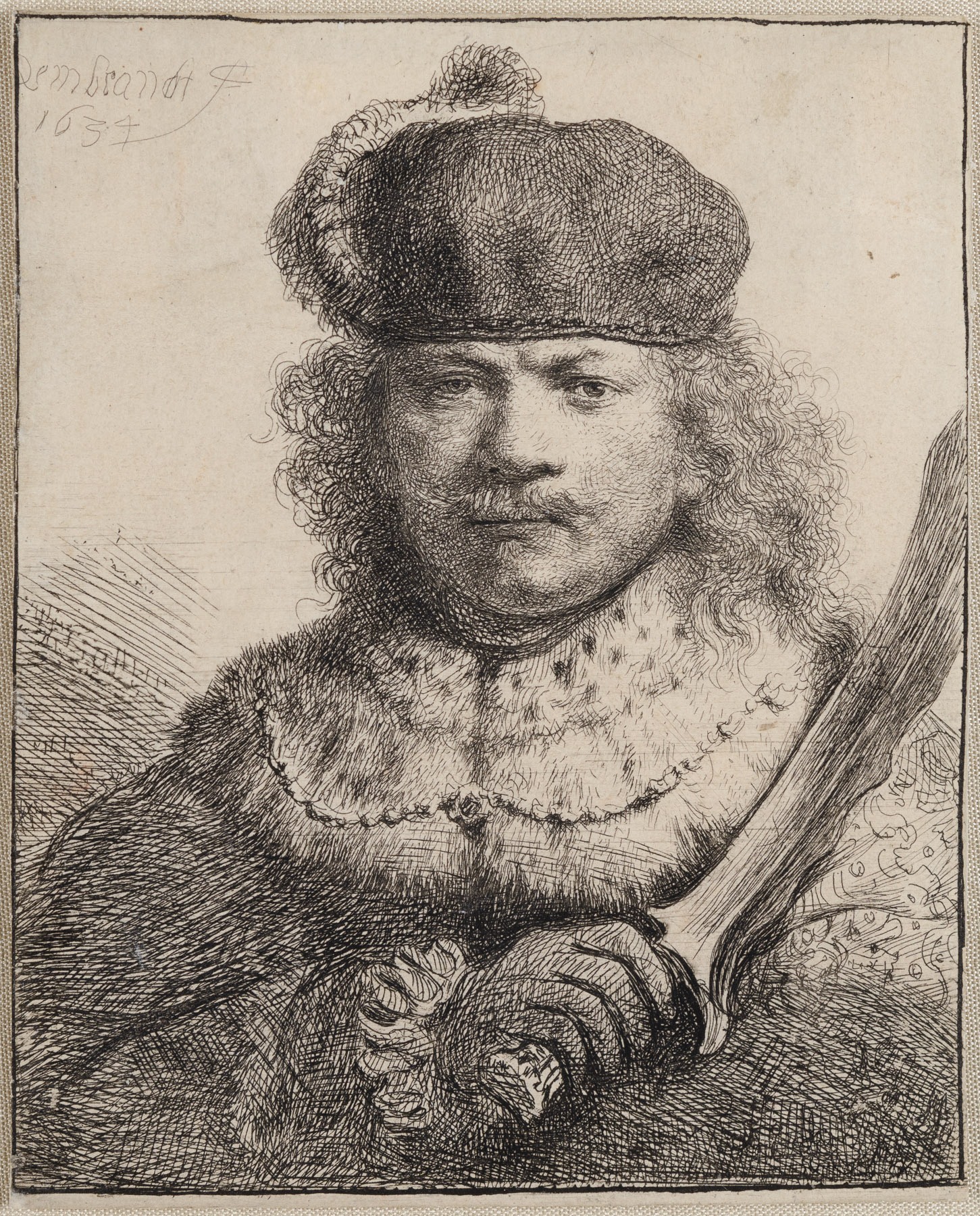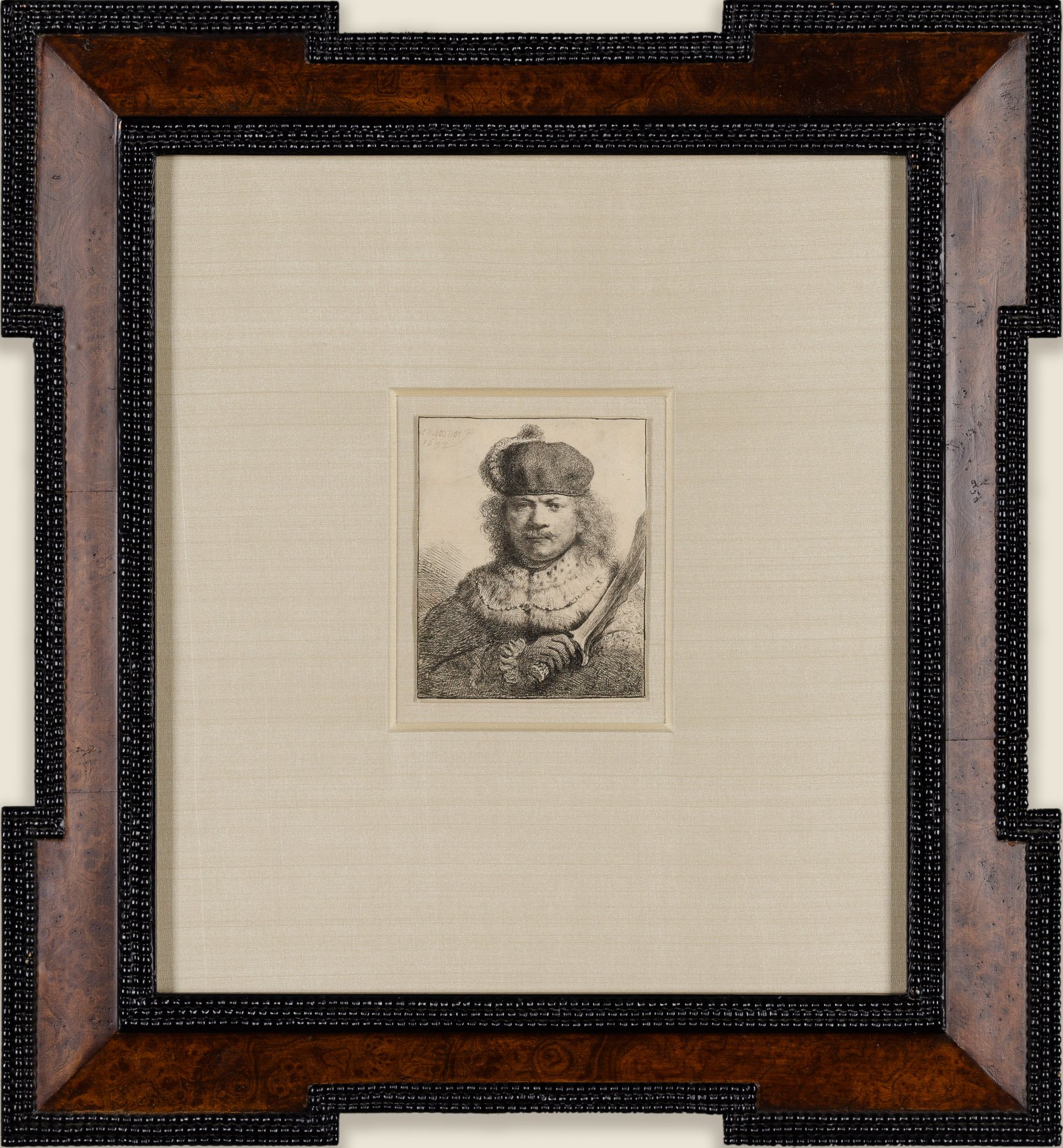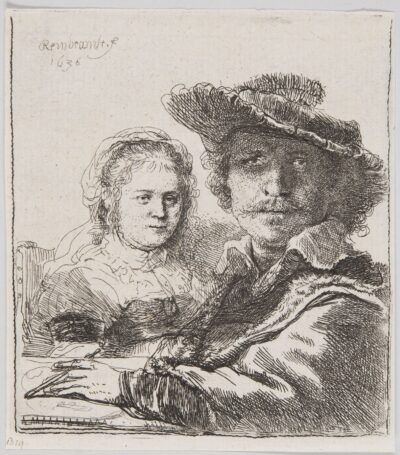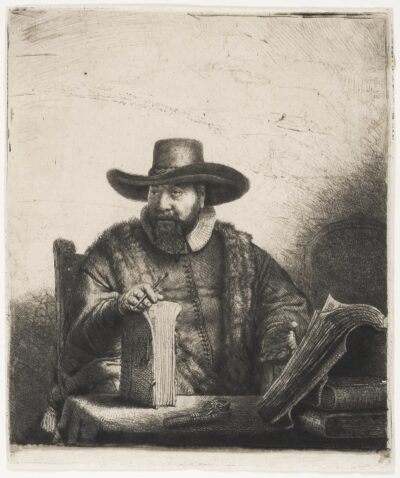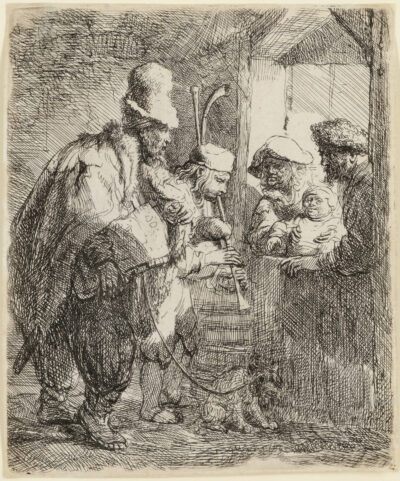Self-Portrait with Raised Sabre
Rembrandt Van Rijn
Self-Portrait with Raised Sabre
etching
1634
An original Rembrandt Van Rijn etching.
1634
Original etching with touches of burin printed in black ink on laid paper bearing the Arms of Würtemberg watermark (Hinterding B’.a.a.; Ash/Fletrcher 9.B’.a., dated to 1634, the same as in the impression of the same state in the collection of the Rijksmuseum, Amsterdam).
Signed and dated in the plate upper left Rembrandt f. / 1634.
A superb 17th century/lifetime impression of Bartsch, New Hollstein, Biorklund-Barnard, and Hind’s second and final state of this rare self-portrait (characterized by G.W. Nowell-Usticke in his 1967 catalogue Rembrandt’s Etchings: States and Values as “a scarce, attractive plate”, and assigned his scarcity rating of “R+” [75-125 impressions extant in that year]), printed after the borderlines at the left and right were moved in and the width of the plate was reduced (the left border line moved to run through the “R” of the signature).
Catalog: Bartsch 18 ii/ii; Hind 109; Biorklund-Barnard 34-A; New Hollstein 134 ii/ii.
Image Size: 4 ¾ x 3 ¾ inches
Sheet Size: 4 ¾ x 3 ¾ inches
In this etching Rembrandt has portrayed himself as an oriental potentate. The figure, rendered virtually as a bust, fills almost the entire pictorial plane and is a commanding presence. The ruler wears a cloak with an ermine collar, signifying his status and power, over which hangs a chain. A design is woven into the material of his cloak. The beret, which Rembrandt wears in a number of his self-portraits, is pulled down over the forehead, and the feather hugs the line of the beret. As in other compositions in which Rembrandt takes himself as a model and dons exotic apparel, it is unlikely that he actually wore all those clothes. More probably, he added some or even all of them from his imagination or worked after the example of other artists.
In his right hand the “oriental potentate” holds a kris against his shoulder. This Indonesian sword has a wavy blade on one side only, which is quite unusual: perhaps it was not depicted after an original model. Moreover, the potentate is holding it incorrectly: the protruding piece at the wavy side of the blade – the so-called “elephant trunk” – should rest against the knuckles of the hand, giving potection. The 1656 inventory of Rembrandt’s property lists a number of weapons, including Indonesian ones, but there is no mention of a kris.
